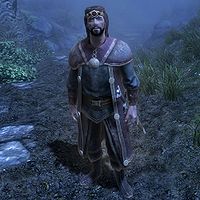Lore:Torygg
| High King Torygg | |||
|---|---|---|---|
| Raça | Nord | Gênero | Male |
| Nascimento | |||
| Morte | 4E 201 Solitude |
||
| Antecessor | Istlod | ||
| Sucessor | Unknown | ||
| Residência | Solitude | ||
| Aparece em | Skyrim | ||
High King Torygg was the Jarl of Solitude and High King of Skyrim until his death at the hands of Ulfric Stormcloak in 4E 201. Torygg's father Istlod ruled as High King for almost twenty-five years, and upon his death, the moot formally named Torygg his successor (despite the disruptive presence of Ulfric, who used the forum to voice his desire for Skyrim's independence). Torygg found Ulfric's calls for independence moving, and respected him for voicing such a bold, borderline treasonous opinion. That is why when Ulfric came to see him in Solitude, Torygg intended to hear more of his arguments for independence with an open mind; neither he nor his court suspected that Ulfric was there to challenge Torygg until it was too late to stop it.
According to Ulfric, he challenged Torygg for the right to be High King, knocked him to the ground with the thu'um, then dispatched him with a sword. Some others say Ulfric "shouted him to pieces" or "ripped him asunder". The Empire and a number of the Jarls, however, viewed the killing of Torygg not as the result of an honorable duel, but as regicide, due to the fact that Torygg was young and had only limited martial training, while Ulfric was a war veteran wielding the power of the thu'um, and moreover, that the duel had been Ulfric's first choice of action, rather than diplomacy. According to his court wizard Sybille Stentor, Torygg had held Ulfric in high regard, and he may have been persuaded if Ulfric had simply asked Torygg to stand with him. Upon Torygg's death, his beloved wife Elisif the Fair succeeded him as Jarl of Solitude, and sought to claim the title of High Queen, with the Empire's backing.
See Also
- For game-specific information, see the Skyrim article.
